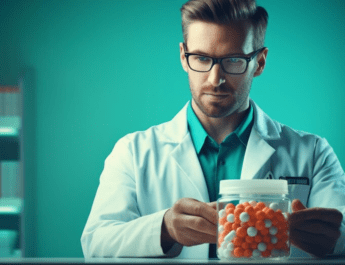Atteeq ur Rahman
Medical device plastic molding, also known as medical moulding, plays a crucial role in the production of various medical devices. From syringes to IV components, medical moulding ensures the creation of precise and reliable products. However, like any manufacturing process, injection molding is susceptible to defects. Understanding these defects and implementing solutions is paramount to maintaining the quality and integrity of medical devices.
Common Injection Molding Defects:
- Sink Marks: These are depressions or dimples on the surface of the molded part caused by uneven cooling rates. They often occur in thick sections of the part where the cooling process is slower.
- Warping: Warping results in the deformation or twisting of the molded part, typically caused by non-uniform cooling or uneven stress distribution during the cooling process.
- Flash: Flash occurs when excess material escapes between the mold halves, leaving thin fins or excess material around the edges of the part. This defect can compromise the functionality and aesthetics of the medical device.
- Short Shots: Short shots happen when the mold doesn’t completely fill, resulting in incomplete parts. This can be caused by inadequate injection pressure, improper temperature control, or incorrect material viscosity.
- Splay: Splay defects manifest as streaks or discoloration on the surface of the molded part, caused by moisture or contaminants in the resin reacting with the heat during processing.
Solutions to Injection Molding Defects:
- Optimized Mold Design: Designing molds with uniform wall thickness and adequate venting can help minimize defects such as sink marks and warping.
- Precision Temperature Control: Maintaining precise temperature control throughout the molding process helps prevent defects like flash and short shots. Advanced molding machines equipped with temperature sensors and controllers can ensure consistent heat distribution.
- Proper Material Selection: Choosing the right resin for medical device plastic molding is crucial. Materials with high purity and suitable mechanical properties reduce the likelihood of defects and ensure compliance with regulatory standards.
- Process Optimization: Fine-tuning injection parameters such as injection speed, pressure, and cooling time can help mitigate defects and improve the overall quality of molded parts.
- Quality Assurance Measures: Implementing rigorous quality control protocols, including in-process inspections and testing, helps identify and address defects early in the manufacturing process, minimizing waste and ensuring product consistency.
Enhancing Medical Moulding Practices for Optimal Product Quality
The manufacturing of medical devices through medical injection molding, commonly referred to as medical moulding, demands precision and reliability. In addition to the aforementioned defects and solutions, several other aspects contribute to enhancing the quality of medical device plastic molding processes.
Advanced Mold Materials and Technologies:
Investing in high-quality mold materials, such as hardened steel or aluminum, ensures durability and longevity of molds, reducing the likelihood of defects caused by wear and tear. Additionally, incorporating advanced technologies such as mold flow analysis software allows for the simulation of the injection molding process, aiding in the identification and prevention of potential defects before production begins.
Cleanroom Manufacturing Environment:
Maintaining a cleanroom environment is imperative in medical moulding to prevent contamination and ensure the integrity of the final product. Strict adherence to cleanliness protocols, including the use of HEPA filters, gowning procedures, and regular sterilization, minimizes the risk of particulate matter or microbial contamination during the molding process.
Material Handling and Storage:
Proper handling and storage of raw materials are critical to preventing defects such as splay or degradation. Storing resin in a controlled environment, away from moisture and contaminants, preserves its integrity and ensures consistent material properties throughout the manufacturing process. Additionally, implementing automated material handling systems reduces the risk of human error and contamination during material transfer.
Validation and Regulatory Compliance:
Medical device plastic molding must adhere to stringent regulatory standards set forth by organizations such as the FDA (Food and Drug Administration) and ISO (International Organization for Standardization). Conducting thorough validation studies, including process validation and equipment qualification, ensures that the manufacturing process consistently produces safe and effective medical devices. Moreover, maintaining detailed documentation of all processes and procedures facilitates regulatory compliance and traceability of manufactured products.
Continuous Improvement and Training:
Embracing a culture of continuous improvement and investing in employee training are essential for optimizing medical moulding processes. Regular performance evaluations and feedback mechanisms allow for the identification of areas for improvement, while ongoing training programs ensure that personnel are equipped with the knowledge and skills necessary to operate machinery effectively and troubleshoot issues as they arise.
Conclusion:
In the realm of medical moulding, the pursuit of excellence is perpetual. By leveraging advanced technologies, adhering to strict cleanliness protocols, and prioritizing regulatory compliance and employee training, manufacturers can uphold the highest standards of quality and safety in the production of medical devices. Through continuous refinement and innovation, the medical molding industry can meet the evolving needs of the healthcare sector while safeguarding patient health and well-being.



